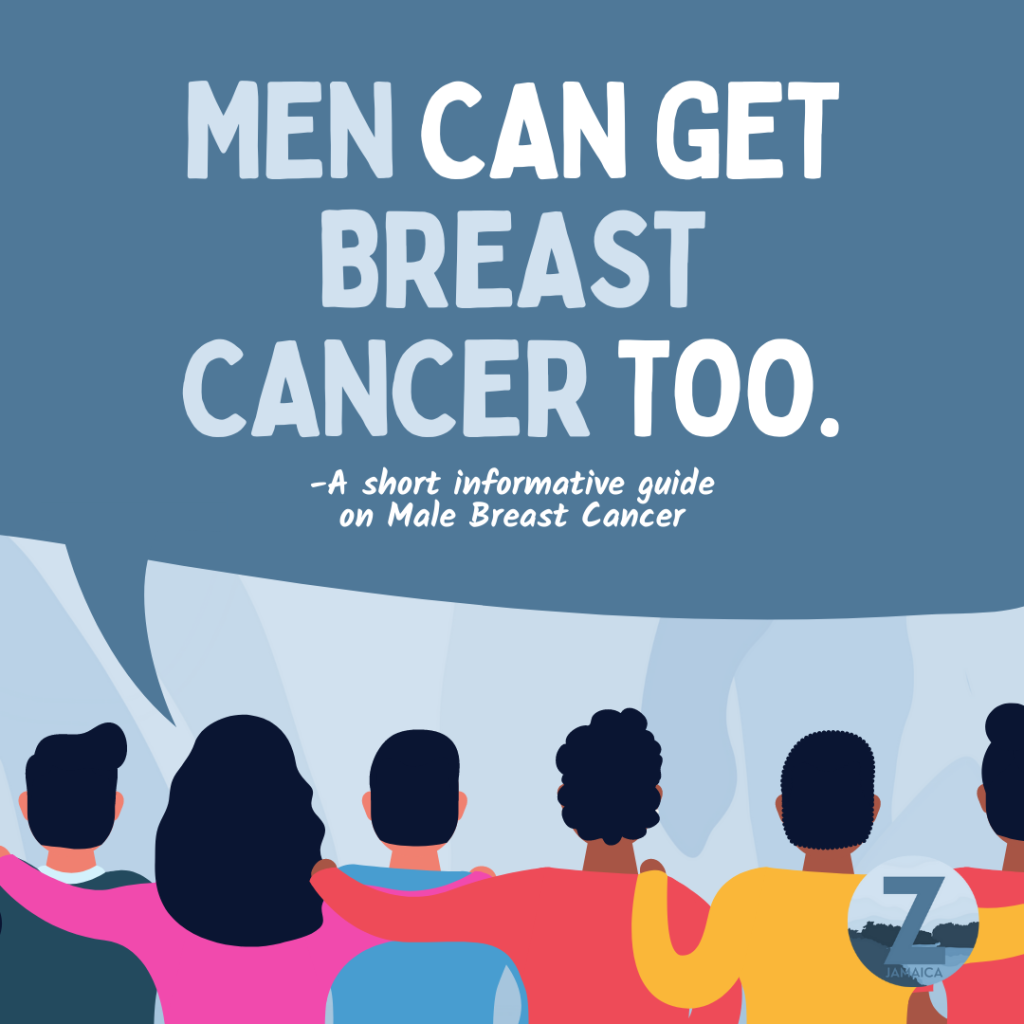by Levi (Destiny) Johnson | October 30, 2021
Male Breast Cancer: The Unheard
Males, females, and intersex people have breasts. Though for men and some intersex persons, these breasts are commonly referred to as “pecs”.
It is important to highlight the definition of “intersex”. Intersex is a general term used for situations, where a person is born with reproductive anatomy that doesn’t solely fit into “male” or “female” categories. For example, being born with more than one reproductive organ, or a combination of two distinctive reproductive organs. Moving forward, the words male and female also speak to include intersex people who share the same respective breast organs.
Though not all males have the same breast anatomy as females, both breast structures are almost identical.
Now, unless you’re a medical practitioner, survivor, or know of a survivor, the thought of male breast cancer has probably never crossed your mind before. Breast cancer is mostly thought of as a “women’s disease,” but male breast cancer can and does occur—and is commonly seen in older males, though it can develop at any age and stage of life.
How is it different?
This type of cancer for men is quite rare. Less than 1% of all breast cancer cases are male, and the probability of being diagnosed with it is estimated at 1 in 1,000. Now you might be wondering, “if it’s so rare, why does it need an article?” The outcomes of male and female breast cancer are drastically different. For males, a 1cm lump could signal an advanced stage, while the same in women signals an early stage due to the different sizes of breast tissue.
With rarity, comes a lack or limited amount of knowledge and understanding. In the past, males were constantly excluded from specific scientific research—most times with no scientific reasoning. Because of this rarity in breast cancer cases, there has been no complete study to find the best treatment method. Due to this, the treatments for this type of cancer are modeled based on treatments of female breast cancer—and these modeled or modified treatments might not be the most optimal.
Men are less aware to assume that a strange lump might be cancerous—especially not breast cancer—which usually causes a delay in treatment time, leaving the lump to develop into the mid to late stages before being noticed or paid attention to. That said, it is usually caught in the mid to late stages when the cancer is more advanced and as such, there is a higher risk of death in the case of male breast cancer.
Signs and Symptoms
Male breast cancer and female breast cancer share similar developmental traits. The only difference is that the focus area for men is around their nipples and areola, whereas females would focus on their entire breast. Some of these symptoms are:
- Unusual lump in any area of the breast.
- Thickening or swelling of the around the nipples of one or both breasts.
- Irritation and redness of breast skin.
- Pain in any area of the breast, along with unwarranted changes in breast size and shape.
- An inward-turned nipple
- A sore or rash around the nipple
- Unusual nipple discharge (oozing or blood)
- Small bumps in the armpit
With early detection, treatment time is shorter and less complicated than when the cancer is in mid to late advanced stages. Checking your breasts regularly for anything unusual can help to ensure early detection which will, in turn, lessen the risk of possible death.
How you can self-examine
The recommended poses for a visual self-examination are: with arms at the sides, behind the head or on the hips (while bent slightly forward), and for physical self-examination is lying down flat on the back.
- Take a look in the mirror: Take notice of the size, shape and look of your breast and nipple. Check visually for swellings, protruding lumps, or skin-related changes. Gently squeeze both nipples to check for discharge.
- Lie down and, with clean hands, feel your breasts: Examine one breast at a time using the fingertips of the opposite hand—index, middle and ring fingers—while the adjacent hand is tucked behind the head. (Example: left hand to right breast, with right hand behind the head)
If you discover lumps, changes in shape and size, feel pains or experience nipple discharge it is recommended to contact your doctor.


Leave a comment